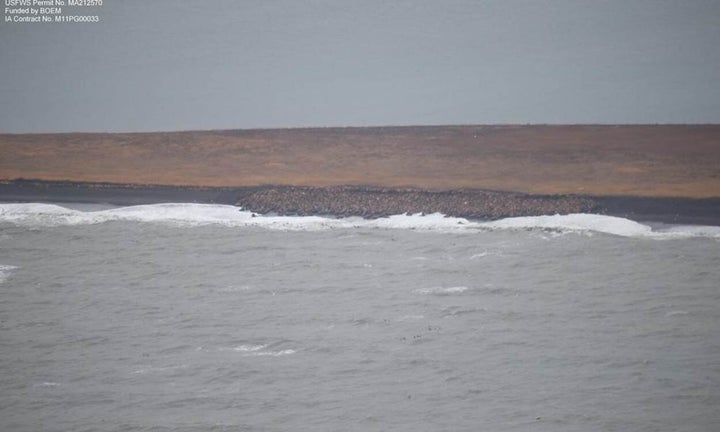Last weekend, David Rose (Mail on Sunday) misleadingly reported on 'global cooling' and growing Arctic sea ice. [http://www.theguardian.com/environment/climate-consensus-97-per-cent/2013/sep/19/climate-change-arctic-ice-sixth-lowest-in-millennia].
In fact, Arctic sea ice has declined to the sixth-lowest extent on record this month. As a result, a growing number of walruses--up to 4,000 at one location by Sept. 14--are being forced to haul out on land. Ordinarily at this time of the year, the walruses--mostly females and their young--would haul out and rest on sea ice offshore in their preferred feeding areas such as Hanna Shoal in the Chukchi Sea north of Alaska.
However, rapid warming of the Arctic has resulted in a dramatic decline in the extent of sea ice. Once the ice disappears from the feeding areas in late summer or early autumn, the walruses must swim long distances to reach the Russian and Alaskan shorelines where conditions are far less favorable and more hazardous than on the ice.

About 2,000 to 4,000 walruses at a barrier island north of Pt. Lay, Alaska on Sept. 14, 2013
© Jake Turner, National Oceanic and Atmospheric Administration/NMFS/AFSC/NMML
This newly published photo taken on 14th September by the Aerial Surveys of Arctic Marine Mammals (ASAMM) Project and obtained by WWF, shows up to 4,000 walruses that have hauled out along the coast near Point Lay, Alaska. The number of walruses on land is likely to swell in coming days and weeks. If panicked, for example by a polar bear or a human hunter, walrus can stampede for the ocean, crushing pups. More than 130 mostly young walruses were crushed in September 2009 at Alaska's Icy Cape.
Sea ice is the defining characteristic of the Arctic ocean and everything that lives there. So tackling climate change remains as urgent as ever, for the walrus, for arctic people, and for wildlife and communities beyond the Arctic. For me, this dramatic picture of walruses massing onshore brings to life a thousand graphs from scientific publications and IPCC reports.
So who would you trust to give us an accurate picture of climate warming in the Arctic ? The Mail on Sunday or the Walrus?
I'm with the walrus.
See also:
Jay CV, Fischbach AS, Kochnev AA (2012) Walrus areas of use in the Chukchi Sea during sparse sea ice cover. Mar Ecol Prog Ser 468:1-13 at http://www.int-res.com/articles/feature/m468p001.pdf